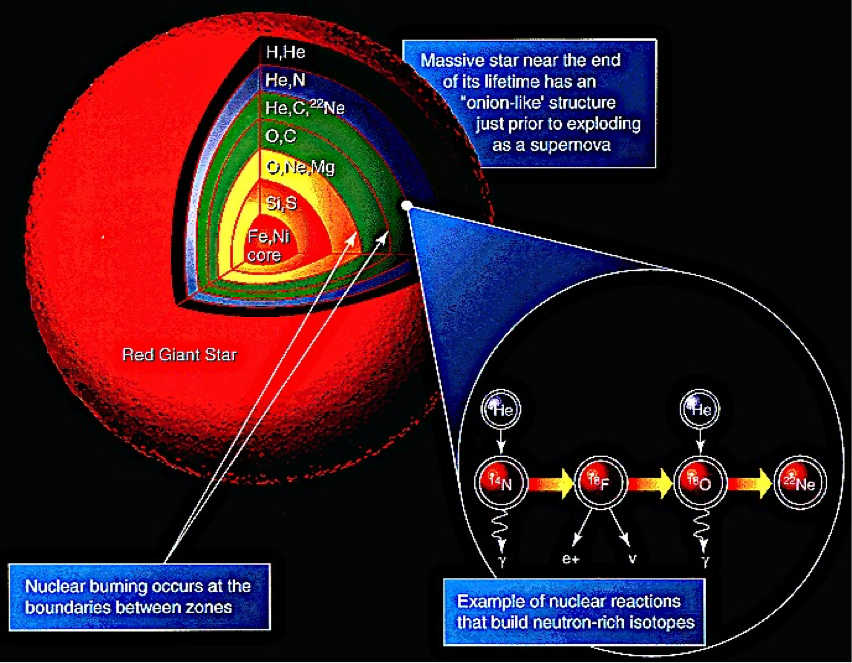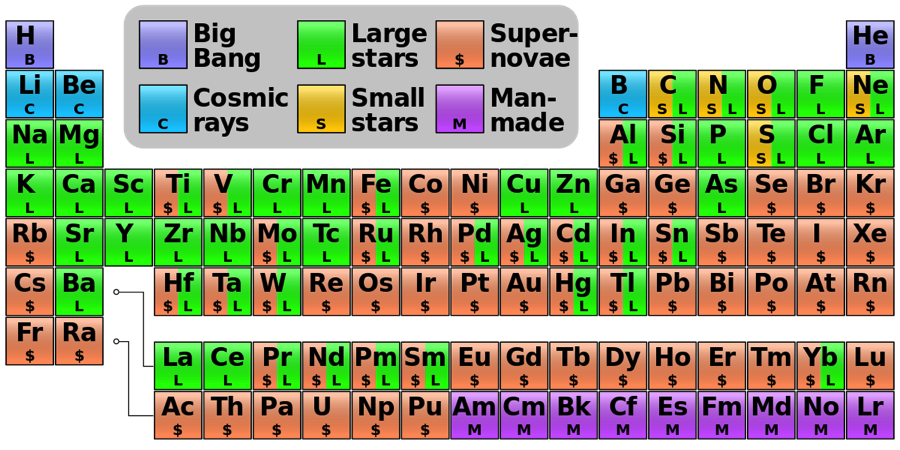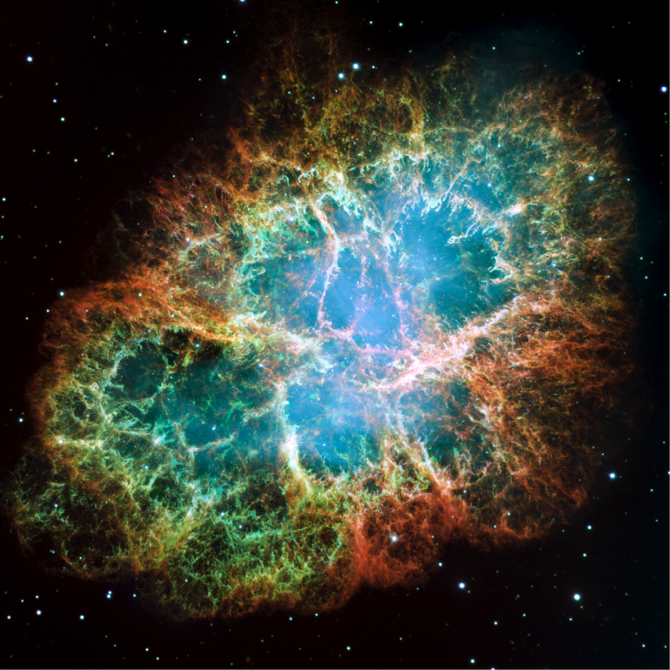Billion Years of Storage
Today, a type of storage that is billions of years old. The University of Houston presents this series about the machines that make our civilization run, and the people whose ingenuity created them.
We all store "things" on a daily basis: clothes in our closets, food in our freezers, data on our computers... Storage is a necessary part of our life. And, so is it in the universe.

A red giant star showing the nucleosynthesis and the elements formed just prior to exploding as a supernova. Photo Credit: Wikimedia Commons
Energy in the universe is stored in various ways... electrical, chemical, mechanical, thermal, and so on. The oldest energy storage — that we know of — took place about 13 billion years ago. During the Big Bang, the first atoms began to form and chemical energy was stored in the elements.

The origin of the chemical elements based on the data at Northern Arizona University Meteorite Laboratory. Photo Credit: Wikimedia Commons
These very very... old chemical elements are now prevalent in the modern stars, cosmic bodies, and planets including our earth.
The formation of these first atoms is called "nucleusynthesis". The process of nucleusynthesis produced what we call the 'light elements'... Hydrogen-2 (2H), Helium-3 (3He), Helium-4 (4He), Lithium-7 (7Li) and so on.
Another event that produced chemical elements that can store energy is called Supernova. Supernova is an explosion of a star. During the supernova, several elements were formed like carbon, nitrogen, oxygen, neon, and sulfur.
In fact, the sources of all the chemical elements on our earth can be traced back to several important events. These events include the Big Bang, formation of large and small stars, cosmic rays, supernova, and more recently, man-made synthesis. A table linking the chemical elements to their event source is available on this episode's website.

The Crab Nebula is associated with 1054 Supernova . Photo Credit: Wikimedia Commons/NASA,ESA/Hester and A. Loll
So, it's fitting to say that the chemical elements and their stored energy have a long history; they go back several billion years' Now, we use these elements, in our food, medicine, cell phones, and many essential items in life. We even use them to make human-made energy storage devices, for example, the lithium in our batteries or hydrogen in the fuel cells. The chemical energy is stored in the chemical bonds. As the bonds break and free the electrons, the chemical energy is converted to other types of energy like electrical or thermal energy.
At this very moment, we are all using these chemical elements in our bodies: oxygen, carbon, hydrogen, nitrogen, calcium, phosphorus, and so on. It's a fantastic collaboration between the old and young: the very old chemical elements working inside the relatively young biological beings. Perhaps, the phrase "Old Soul" has a certain scientific angle to it.
I'm Haleh Ardebili at the University of Houston, where we're interested in the way inventive minds work.
(Theme music)
Woosley, S. E., and Thomas A. Weaver. "The evolution and explosion of massive stars. II. Explosive hydrodynamics and nucleosynthesis." The Astrophysical Journal Supplement Series 101 (1995): 181. http://adsabs.harvard.edu/full/1995ApJS..101..181W7
Lu, F. J., et al. "Chandra observation of supernova remnant G54. 1+ 0.3: A close cousin of the Crab Nebula." The Astrophysical Journal Letters 568.1 (2002): L49. http://www.jstor.org/stable/40670293?seq=1#page_scan_tab_contents
Reeves, Hubert, et al. "On the origin of light elements." The Astrophysical Journal 179 (1973): 909-930. http://adsabs.harvard.edu/full/1973ApJ...179..909R
Chen, James L., and Adam Chen. "The Hubble Deep Field, Ultra-Deep Field, and eXtreme Deep Field." A Guide to Hubble Space Telescope Objects. Springer International Publishing, 2015. 179-188. http://link.springer.com/chapter/10.1007/978-3-319-18872-0_7#page-1
This episode was first aired on February 16, 2016